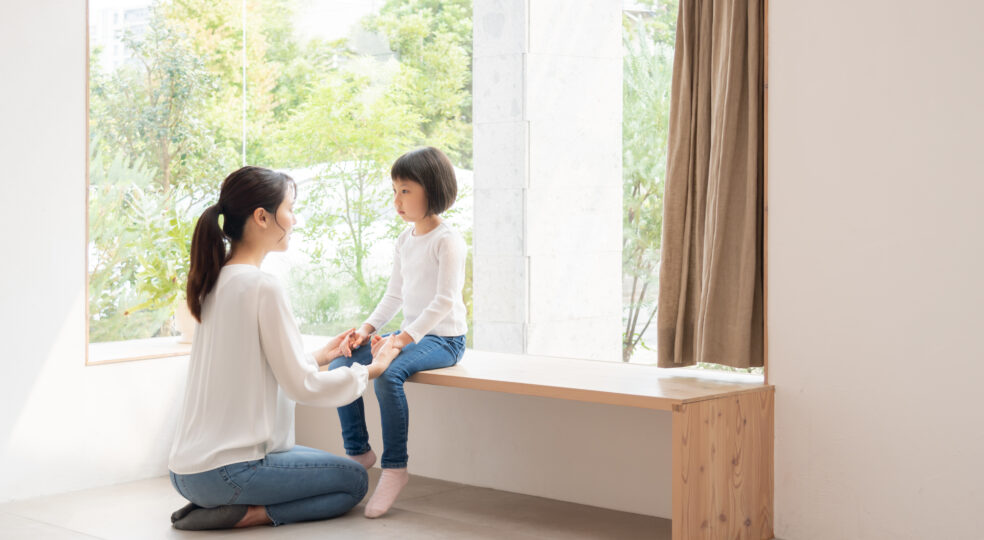
Children depend on parental support to help them become responsible adults. There are a variety of parenting styles that differ from each other in their different strategies. A permissive parenting style is characterized by different principles than an authoritarian or democratic parenting style.
The decisive characteristic of the permissive parenting style is that the parents largely hold back. The child should learn to take the initiative and make its own decisions. Advice and help are only given when children explicitly ask for it. This is why the permissive parenting style is often compared to the laissez-faire parenting method and is considered its moderate form.
Does a permissive parenting style have any effects? Like any other type of child rearing, a permissive parenting style has both advantages and disadvantages. Advantages are considered to be the promotion of Personal initiative and creativity are perceived. The fact that there are hardly any rules and few boundaries can prove to be a disadvantage.
The various Parenting Styles were first typologized in the 1940s. At that time, the Austrian psychologist Kurt Lewin divided the known forms of education into several main categories. Within each category he defined further educational methods with similar weightings.
Because of common characteristics, a permissive parenting style has been classified close to the laissez-faire parenting style. The permissive parenting style definition describes this parenting concept as its moderate form.
A permissive parenting style first developed in the USA. The US developmental psychologist Diana Baumrind, who at the time was researching the effects of parents' parenting behavior on child development, was in charge.
Initially, there was talk of a single permissive parenting style. Later, a differentiation was made between a neglectful and a spoiling style. Basically, a permissive parenting style is always characterized by a certain distance between parents and child. In addition, compliance and Tolerance towards the child plays a major role.
The permissive style of education is one of the forms of education that deliberately avoid control, fixed rules and punishment. The aim is to give children a sense of independence. The little ones should develop without being restricted. On the other hand, in the permissive parenting style, there are no guidelines for children to follow. Parents have a passive role and only intervene when help and support are explicitly requested.
In permissive parenting, the child takes the active part. It must express itself and say what it needs. Children who are brought up according to this principle learn early on to take their own stand.

Specific characteristics distinguish a permissive parenting style from other parenting methods. The focus is on the independent, individual development of a child. By definition, this form of education is relatively one-sided.
As a mother or father, you only react to the wishes of your children. However, you do not question the reasons for this. Since the children have the decision-making authority, a permissive parenting style is called permissive from a parent's perspective.
Typical permissive parenting style characteristics include:
The permissive method of education aims to enable children to grow up with the greatest possible freedom and independence. Therefore, caregivers such as parents, grandparents and educators do not interfere in the children's affairs.
Parents and children meet with a certain distance. However, this is not neglectful behavior, because the little ones can turn to mother and father at any time, express wishes or ask for help.
A permissive parenting style differs from other parenting models in that there are hardly any rules. Boundaries are set for the children only to a limited extent. There is a conscious decision not to impose rules, so that the children's freedom is not restricted.
The purpose of not using guidelines is to avoid steering young children in a certain direction. Since permissive parenting does not require "correct" behavior, children cannot expect praise. However, they also do not have to expect punishment if they have done something stupid.

At first glance, the permissive and laissez-faire parenting styles seem almost identical. Although both parenting models are similar, they differ from each other in some details. What the laissez-faire style of parenting and permissive parenting have in common is the basic idea. Children should be allowed to develop independently, with freedom and as few rules as possible.
A permissive parenting style is less consistent than the laissez-faire parenting style, which simply "lets the child do it." This is why permissive parenting is referred to as a somewhat mitigated form of the laissez-faire parenting style.
The term "permissive" comes from psychology and means: yielding, little controlling, and allowing freely. Parents who raise their child according to a permissive parenting style tend to hold back. However, unlike the laissez-faire parenting style, there are some limits.
Laissez-faire education is the antithesis of authoritarian or autocratic education. Children are completely free to decide what they want to do and what they don't want to do. There are no guidelines of any kind. This can make it difficult for children to find their way around. A permissive parenting style is also characterized by parental restraint, but young children are encouraged to ask for help and support when needed.
Like any form of child rearing, permissive parenting style has advantages and disadvantages. The goal of a parenting method is to help children grow up. In the permissive parenting style, independence is specifically encouraged.
Children should learn to make decisions for themselves and to Take responsibility for their actions. The parents adopt a passive attitude. Proponents of this method describe the advantages of the permissive parenting style as follows:
Creativity and freedom complement each other. In order for children to develop creative ideas, they should not be restricted. In permissive parenting, children learn to perceive their needs and develop more initiative. Since there is little control by adults, the little ones can try out many things. As a result, they learn and become independent more quickly.
Parents do not restrict their children in their scope of action. Desires and the behavior of the offspring accept Mom and Dad. Parental control and punishment are only exceptional in the permissive parenting style. Since a permissive parenting style is based on tolerance and compliance, this parenting method is very popular.
Does a permissive parenting style have disadvantages? Tolerance, permissiveness and lack of rules do not remain without effects on children's behavior. For children, the absence of structure is associated with insecurity. connected. Young children in particular need rules to orient themselves. Parental restraint and the resulting lack of attention can have negative consequences.
Disadvantages of the permissive method of education are:
Children need adult support to help them find their way. In the absence of loving guidance from guardians, uncertainty and Fears arise.
If you let your child get away with everything, he or she will hardly develop social competence. Children raised with too much compliance often stand out because of their inconsiderate behavior toward others. They have no understanding for the wishes and expectations of other people. Empathy is foreign to them because they have not learned to observe rules and respect boundaries.
A permissive parenting style offers a lot of freedom for children, but children hardly have to expect any consequences for misbehavior. This leads to the fact that the little ones do not recognize their mistakes and do not change their behavior.
Is a permissive parenting style the right parenting method for you? Do you want to give your children a lot of freedom, encourage creative behavior and independence?
A permissive parenting style, for example, is to give your child room for self-expression by letting him decide with whom he spends his free time. If your child expresses the desire to romp around with peers on the playground, you let him or her do so, even if it is chilly outside. Do not interfere with the choice of clothes. If your child comes home cold, he or she will ask for a warm jacket or anorak.
As a result, it learns to plan the next play trip better and also to pay attention to the weather conditions. In the worst case, a permissive parenting style can have consequences that are unpleasant. For example, your child may catch a cold if he or she is dressed too thinly. In addition, there is a risk that your offspring will become a spoiled egoist if there are no rules and restrictions. If you are too lenient, your children will take advantage of this to do whatever they want.
Another example of permissive parenting style concerns learning. Are your children allowed to study when they want? Do you look at their homework? Permissively raised children decide for themselves whether to do their schoolwork. There is no control by the parents. If you raise your children according to this concept, you allow them this freedom and only become active when teachers draw your attention to school problems.
The permissive parenting style is one of many parenting models. Other well-known parenting methods are:
Authoritarian and anti-authoritarian parenting styles form two opposites. While the authoritarian method of education is characterized by strict rules without compromise, regulations are completely absent in the anti-authoritarian model. In an authoritarian Education is no scope for the child's own initiative or independence. By constricting and strict punishment there is also the danger that no healthy Self-esteem .
The autocratic style of education is particularly strict. Here, strict instructions are given and unconditional obedience is demanded. Frequent consequences of a too strict upbringing are psychological injuries and feelings of inferiority.
The democratic style of education is characterized by a balance between structure and freedom. The children have permission to try out many things. Problems and questions are discussed between parents and children, decisions are made together. The child can become active and develop independence, but also learns about limits.
In the egalitarian parenting style, parents and children are equal partners. The children's wishes are taken into account in everyday life, as are the parents' views. There are no family hierarchies. The youngest child has just as much say as mom or dad. Although this form of upbringing is considered to be particularly liberal and tolerant, children can find it difficult later in life when they encounter hierarchical structures at work, for example.
The laissez-faire parenting style grants parents only a passive or neutral role. They let the child do as he or she pleases and are reluctant to intervene or interfere. The negating parenting style is even more extreme. Basically, no education takes place at all in this model. Parents leave their children to their own devices. Guardians are only on hand to advise.
The different parenting styles are characterized by the basic attitudes of the parents towards their children. Since every family has different values, the educational goals and behavior can differ.

